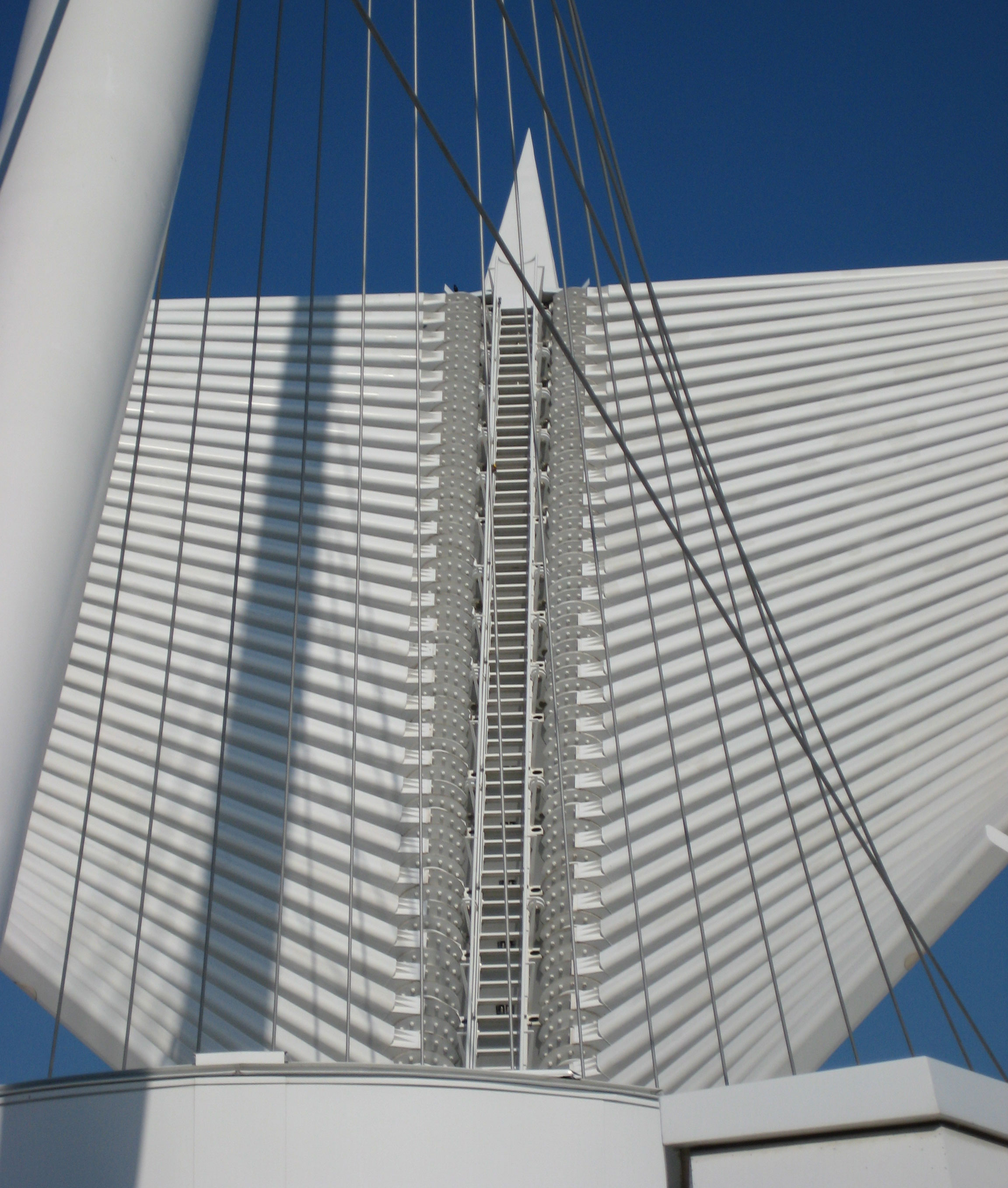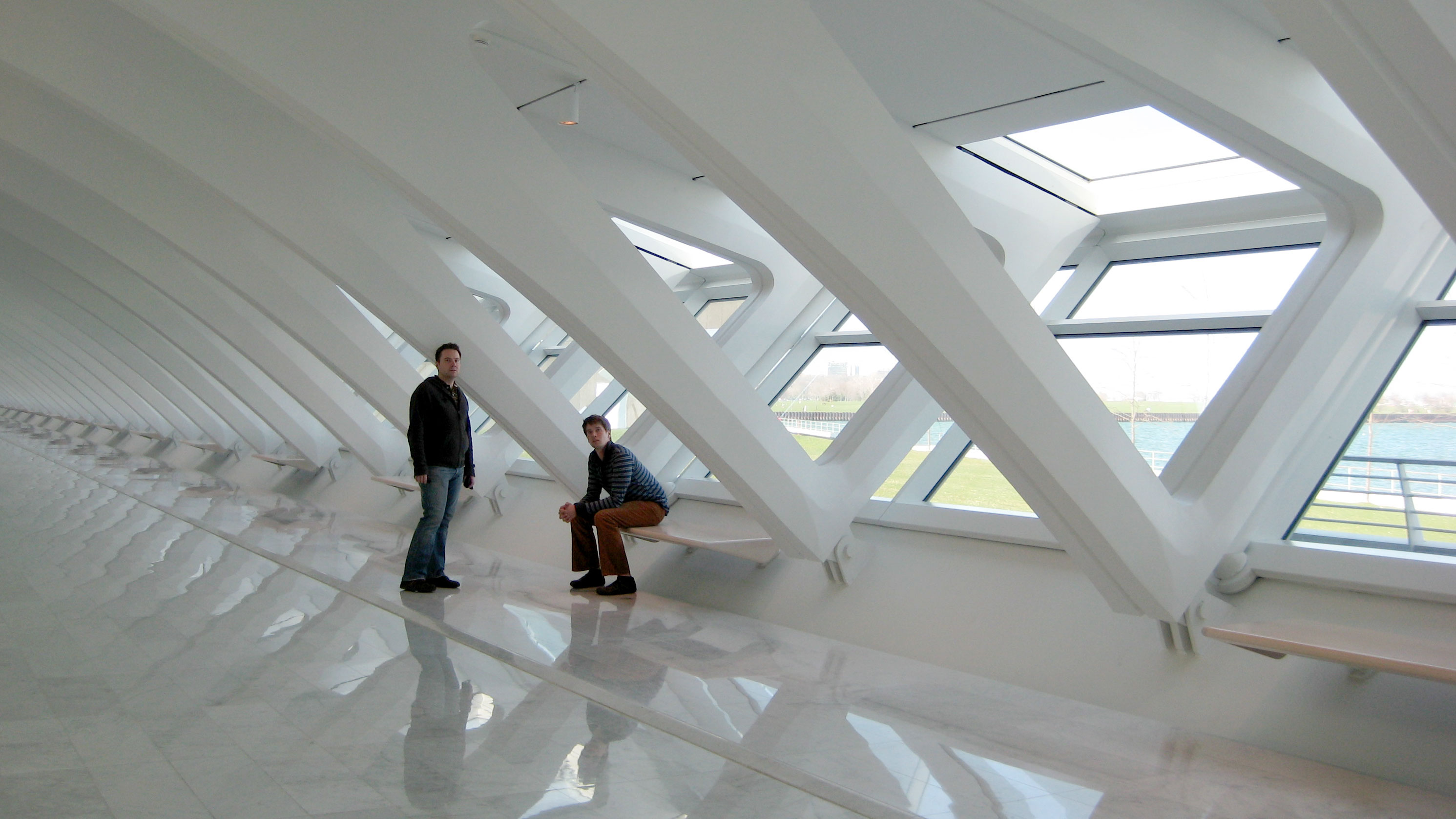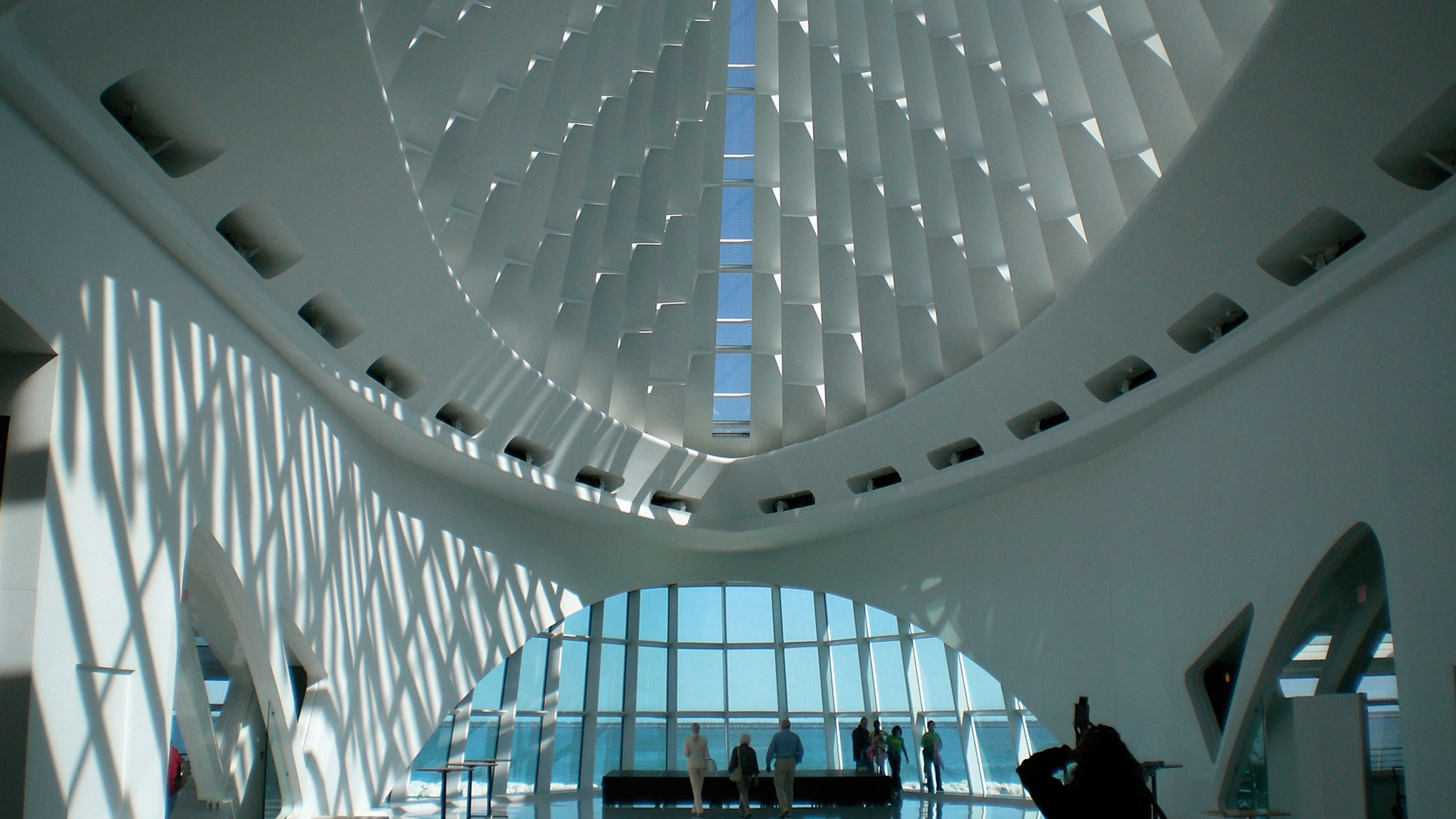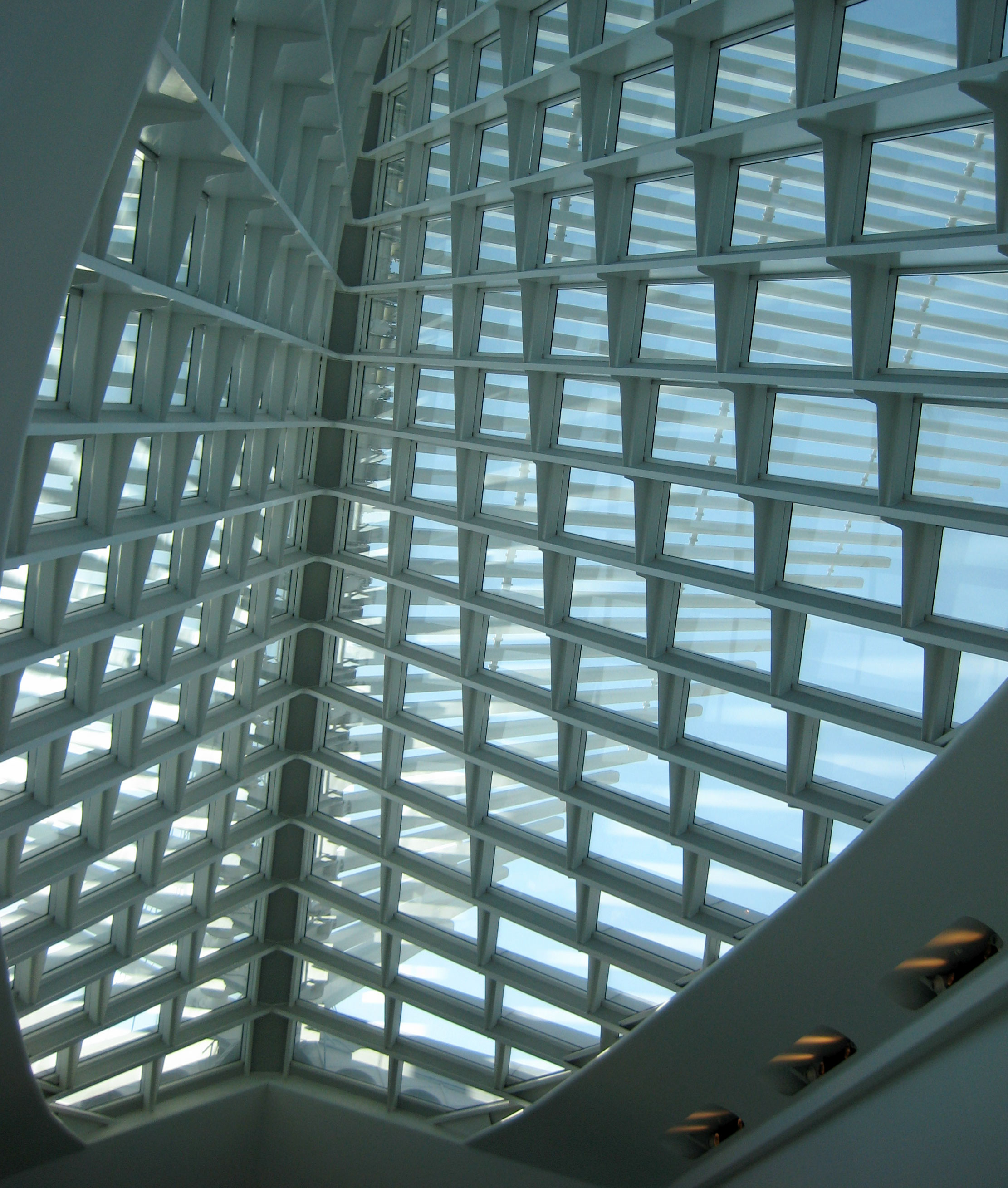Milwaukee Art Museum, Wisconsin
Santiago Calatrava
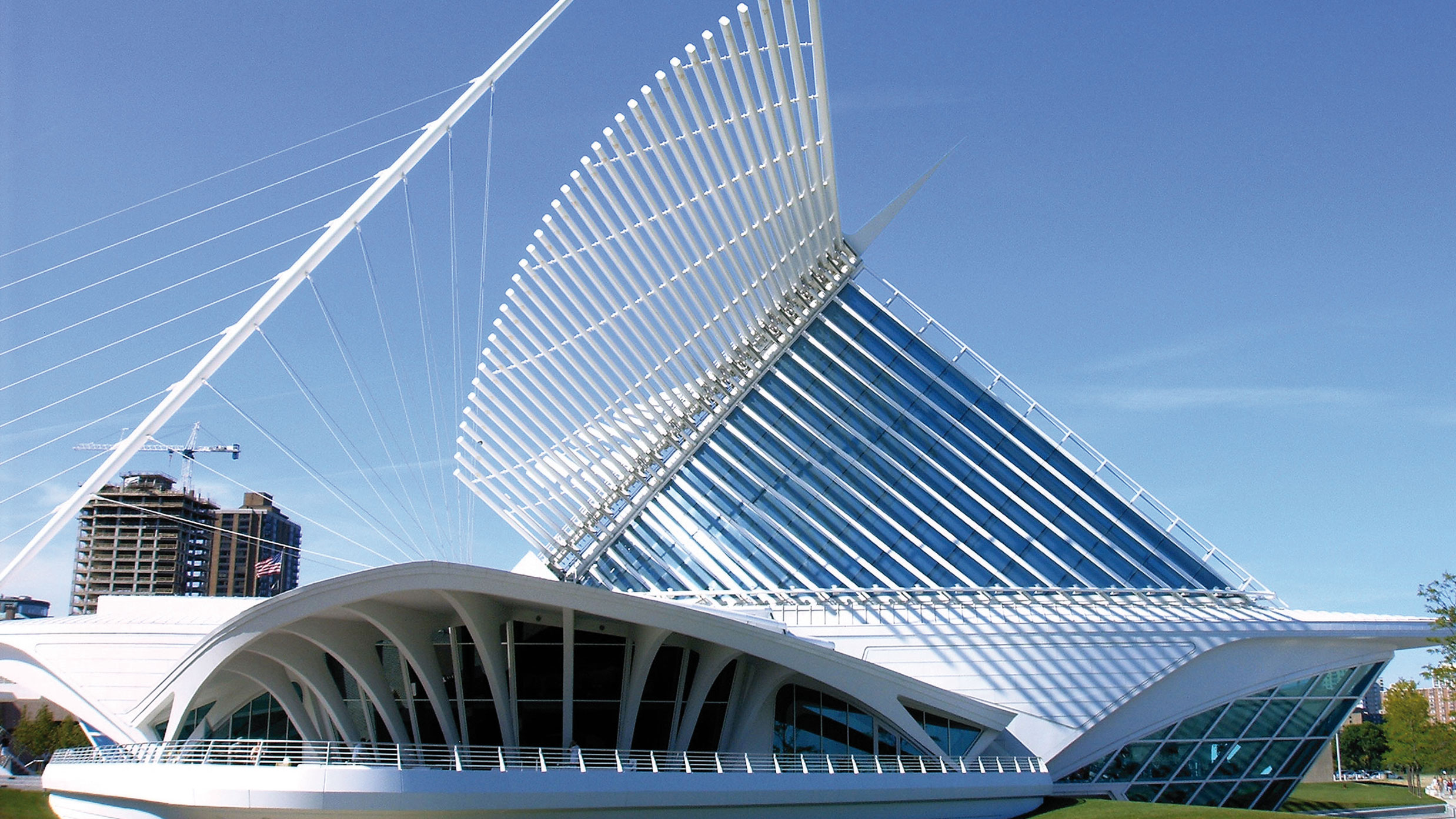
Products
The project mirrors the culture of the lake - yachts, the climate, a feeling for motion and transition.
A bird spreads its wings as if setting off towards Lake Michigan. These are huge white wings made of glass, concrete and steel that form part of the Milwaukee Art Museum annexe built by top Spanish architect Santiago Calatrava, a man well known for the organicism of his work. The Quadracci Pavilion, as the annexe is called, abuts the comparatively low-key original museum structure built in the 1950s by Finnish-US American architect Eero Saarinen. It serves as the premises for a collection of modern art, a lecture hall, assembly spaces and a museum shop.
Calatrava was seemingly more intent on adding something to the lake shore than to the existing building. As he puts it: “The project mirrors the culture of the lake - yachts, the climate, a feeling for motion and transition.” The pavilion blends in equally well with both its urban and its natural environs. Its veritable cornucopia of windows lend it a brilliantly lit transparency that contrasts starkly with the compressed solidity of Saarinen’s building. The bold, white, prestressed concrete structure engenders spatial entities reminiscent of skeletons and caves. Asymmetrical twists and turns combine with idiosyncratic circular forms to yield an organic life all its own.
The single-storey gallery is akin to a wave. Masts secured by steel hawsers give the footbridge, which simultaneously resembles an arm reaching out towards the city centre, the look of a sailing boat. Everything is in flux here - water, the lake and a postmodern sculptural study in stylised Nature.
Building details
Photos: Jan Bitter
